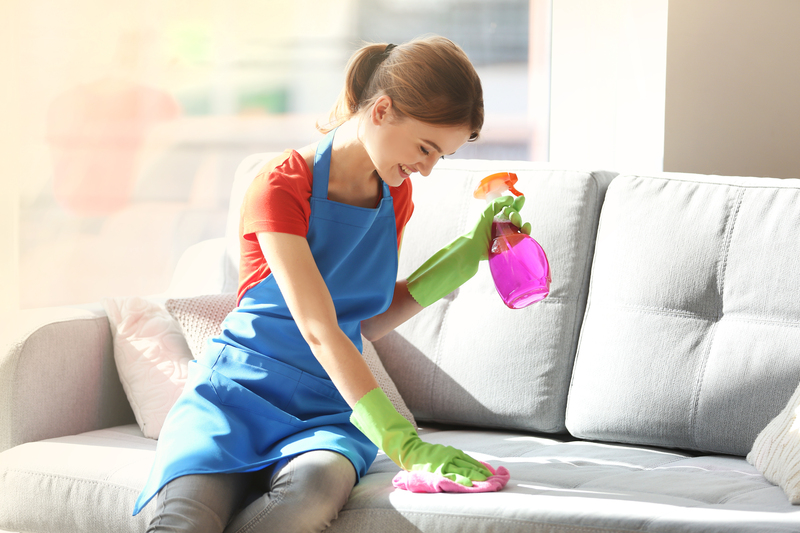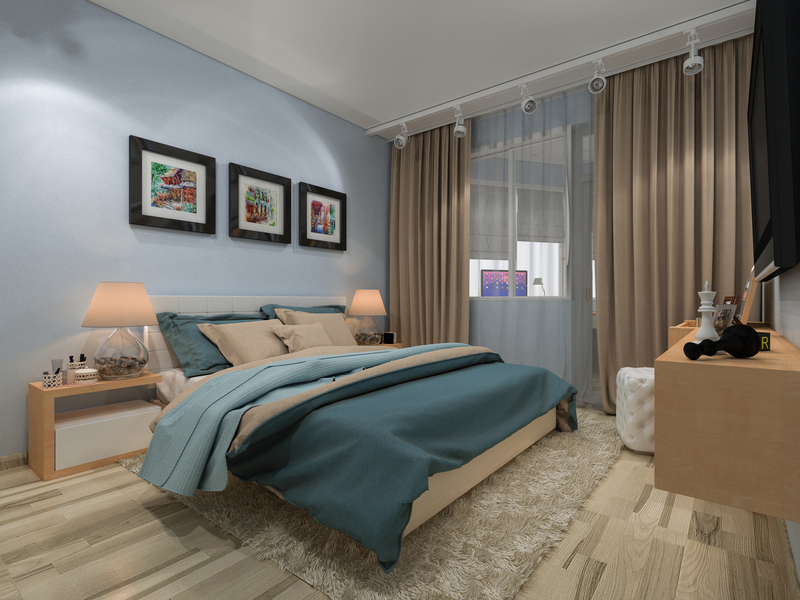Master the Art of Carpet and Hard Floor Cleaning for a Pristine Home
Posted on 26/09/2025
Master the Art of Carpet and Hard Floor Cleaning for a Pristine Home
A beautifully clean home starts from the ground up. Whether you have plush carpets or elegant hard floors, maintaining spotless surfaces is essential for health, comfort, and visual appeal. This comprehensive guide will help you master the art of carpet and hard floor cleaning so your home shines from the inside out!
Why Proper Floor Cleaning Matters
Your floors see it all--dust, spills, shoes, pets, and daily foot traffic. Regular cleaning not only ensures a pristine home environment but also extends the life of your flooring. Here's why investing time and effort in carpet and hard floor cleanliness is worth it:
- Healthier Indoor Air Quality: Remove dust mites, allergens, and bacteria hiding in carpet fibers and on hard surfaces.
- Preserved Flooring: Timely cleaning prevents stains, scratches, and permanent damage.
- Enhanced Aesthetics: Floors are the visual foundation of your decor; their cleanliness sets the mood for your whole space.
- Improved Comfort: Clean carpets feel soft underfoot and clean hard floors provide a satisfying shine and smoothness.

Essential Tools & Supplies for Immaculate Flooring
Before diving into carpet and hard floor cleaning, it's important to have the right tools at your disposal. Here are some must-haves for different surfaces:
For Carpets:
- Vacuum Cleaner: Preferably with HEPA filter and attachments for edges and upholstery.
- Steam Cleaner or Carpet Shampooer: For deep cleaning and stain removal.
- Carpet Brush: Manual agitation tool for stubborn spots.
- Microfiber Cloths and Clean Towels: Blotting and drying.
- Gentle Carpet Cleaner or Eco-friendly Solution: For safe, effective spot treatment.
For Hard Floors (Wood, Tile, Laminate, Vinyl, Stone):
- Broom or Dust Mop: For preliminary dust removal.
- Microfiber Mop: For thorough wet cleaning.
- PH-neutral Floor Cleaner: To avoid surface damage.
- Bucket: For mopping solution.
- Soft Cloths or Towels: For drying and buffing.
Step-By-Step Guide to Carpet Cleaning
Carpet cleaning is more than vacuuming--it's a process that keeps fibers fresh, removes odors, and lifts stubborn stains. Follow these steps to achieve expert results:
1. Regular Vacuuming
- Aim to vacuum high-traffic areas at least twice a week, and less-used rooms once a week.
- Move furniture periodically to clean underneath and prevent dirt buildup along edges.
- Use slow, overlapping strokes for maximum dirt extraction.
2. Immediate Stain Treatment
- Act fast! Blot spills with a clean, dry towel--never rub, as this pushes stains deeper into the carpet pile.
- Apply an appropriate carpet spot cleaner and gently agitate with a brush or cloth.
- Rinse with a damp cloth, then blot dry.
3. Deep Carpet Cleaning
- Steam cleaning or hot water extraction is recommended every 6-12 months or after large spills/pet messes.
- Choose a quality machine or hire a professional for optimal results.
- Allow carpets to dry thoroughly by increasing airflow with fans or by opening windows.
4. Odor Removal Techniques
- Sprinkle baking soda liberally on dry carpets. Let it sit for 30-60 minutes, then vacuum thoroughly.
- For persistent odors, consider using an enzymatic cleaner specifically for pet accidents.
Special Tips for Carpet Longevity
- Use entry mats: Place at all entrances to reduce tracked-in dirt.
- Rotate furniture: Prevent permanent carpet indentations by changing layouts every few months.
- Avoid shoes indoors: This simple habit significantly prolongs carpet cleanliness.
Hard Floor Cleaning: Strategies for Every Surface
Hard flooring--whether it's beautiful hardwood, elegant tile, practical laminate, or luxury vinyl--requires specialized cleaning methods to maintain its shine and durability. Discover how to care for each type with confidence:
1. Sweeping and Dusting
- Begin with a soft-bristled broom or microfiber dust mop. This prevents scratching caused by abrasive dirt or sand particles.
- Regularly sweeping at least 3-4 times a week keeps floors free of debris and protects finishes.
2. Mopping and Damp Cleaning
- Always wring out mop heads well--excess water is the enemy of most hard floors, especially wood and laminate.
- Choose a PH-neutral cleaner--harsh acids or bases can dull finishes and cause long-term damage.
- Dry floors immediately after mopping with a soft towel or microfiber cloth.
3. Dealing with Sticky Spills and Spots
- For sticky stains, use a solution of warm water and mild detergent. Avoid abrasive scrubbers.
- In kitchens or high-traffic areas, spot clean as soon as accidents occur.
4. Polishing & Buffing for Extra Shine
- Polish wood floors every few months with a designated floor polish for added luster and protection.
- For tile or stone, use a stone-safe sealant or polish as directed.
Floor Type-Specific Cleaning Advice
Hardwood Floors
- Never saturate with water. Moisture can warp and stain wood planks.
- Add felt pads under furniture legs to prevent scratching.
- If necessary, use a specialty hardwood cleaner or a diluted vinegar solution (1/4 cup vinegar per gallon of water).
Laminate Flooring
- Wipe up spills immediately--as laminate absorbs water quickly.
- Use only microfiber mops: traditional wet mops can cause swelling at the seams.
- Avoid oil soaps or wax-based products that leave residues.
Tile Floors
- Microfiber mop and PH-neutral cleaner are ideal for tile and grout.
- Deep clean grout with a paste of baking soda and water, then scrub with a small brush for pristine lines.
- Seal grout lines once or twice a year to prevent stains and bacterial buildup.
Vinyl Floors
- Clean with a damp mop and vinyl-friendly cleaner.
- Avoid abrasive pads or ammonia, which can erode protective coatings.
- For scuff marks, try a soft eraser or a damp cloth with baking soda.
Dealing with Common Floor Cleaning Challenges
Pet Hair and Allergens
- Use a strong suction vacuum--preferably with a HEPA filter--to trap and remove pet dander from both carpets and hard floors.
- Rubber brooms or squeegees can help gather hair from floors and rugs.
High-Traffic Areas
- Lay area rugs or mats in entryways and hallways to protect main walkways.
- Clean these areas more frequently and consider professional deep cleaning twice a year.
Sticky Residue
- On carpets, gently scrape away with a spoon, then clean as above.
- On hard floors, a diluted solution of water and white vinegar can work wonders--be sure to patch test first.
Eco-Friendly and Allergy-Safe Cleaning Options
Choosing natural cleaning products can benefit both your health and the planet. Here are some tips for those who prefer eco-friendly carpet and floor cleaning:
- Baking soda: Ideal for neutralizing odors in carpets and grout.
- White vinegar: Disinfects and restores shine on sealed hard floors (avoid on natural stone or unsealed wood).
- Essential oils (like tea tree or lavender): Add a few drops for a fresh, chemical-free scent.
- Microfiber cloths: Clean effectively with just water, capturing dirt and dust without harsh chemicals.
When to Call the Professionals
Even the most diligent cleaning routines occasionally need professional help. Consider hiring a floor or carpet cleaning company if:
- You have persistent, deep-set stains or odors that won't budge.
- Your carpets or hard floors haven't been cleaned in over a year.
- You need a refresh after renovations, floods, or big events.
- You want the benefits of high-powered, industrial cleaning machinery.
Maintaining a Cleaning Routine for Ongoing Pristine Floors
Developing a consistent schedule ensures your carpets and hard flooring remain immaculate all year long. Try this sample cleaning routine:
- Daily: Sweep or dust-mop high-traffic areas; spot clean spills.
- Weekly: Vacuum or mop all rooms; rotate entry mats for even wear.
- Monthly: Deep clean stubborn spots and polish hard floors as needed.
- Annually: Professionally clean carpets and have hard floors sealed or refinished if necessary.

Frequently Asked Questions
How often should I shampoo my carpets?
For most homes, deep cleaning carpets every 6-12 months is recommended. However, high-traffic zones or families with children/pets may need cleaning every 3-6 months.
What is the quickest method for hard floor cleaning when guests are arriving?
Dust-mop or vacuum, then run a damp, well-wrung microfiber mop with a quick-drying solution. Open windows or turn on fans for speedy drying.
Is steam cleaning safe for all floor types?
No. Steam cleaning is generally safe for tiles and some carpets, but it can damage hardwood, laminate, and certain luxury vinyl surfaces.
Are DIY cleaners as effective as commercial products?
Natural solutions (such as vinegar and baking soda) are great for routine maintenance and quick cleans, but stubborn stains may require specialized formulas.
Conclusion: Elevate Your Home with Expert Floor Care
The true art of carpet and hard floor cleaning lies in combining the right tools, effective techniques, and regular habits. By mastering these skills, you'll transform your living space into a pristine sanctuary you can be proud of--beautiful underfoot, allergen-free, and inviting to all who enter. Invest in your floors, and enjoy a fresher, cleaner home every single day!



